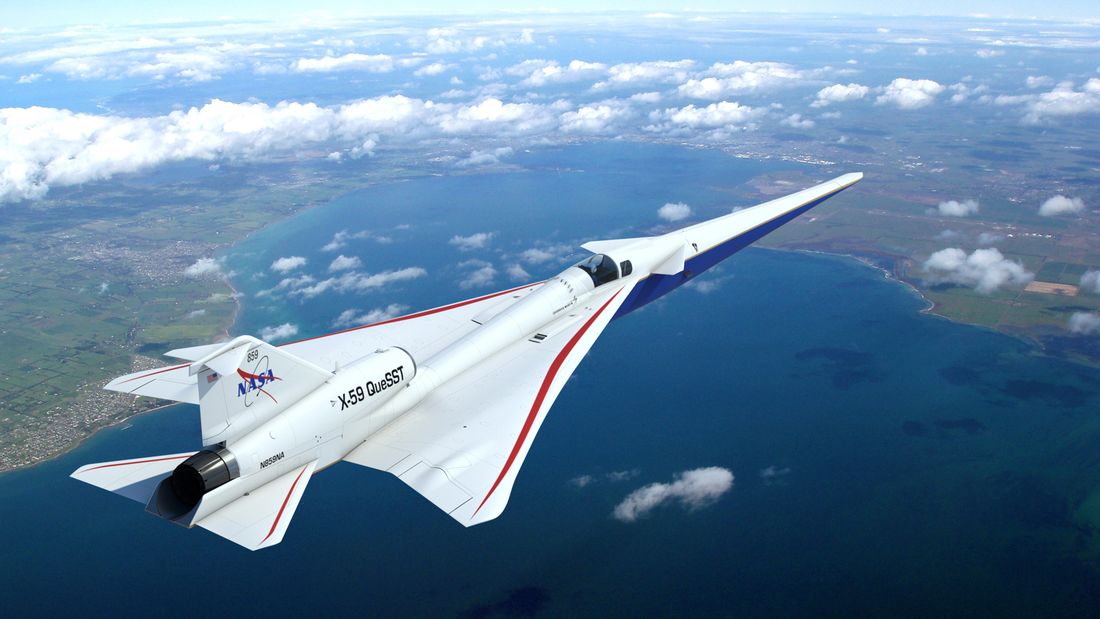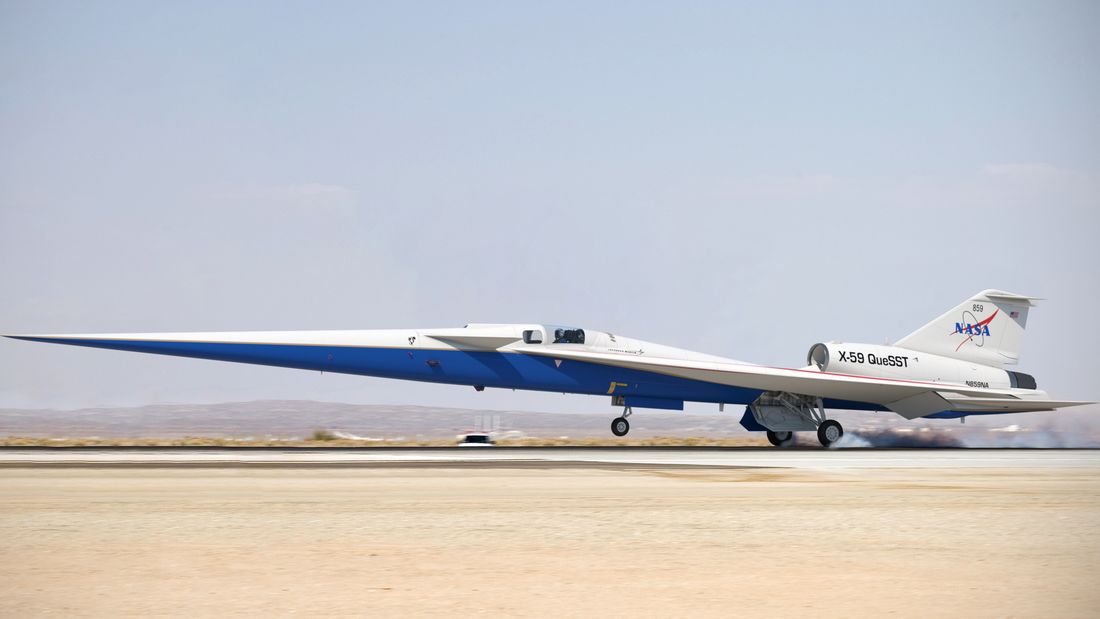
A jet flying at speed sound without bang!
The problem with supersonic jets, i.e. flying at sound speed (1,235 km/h; 1,125 ft/s; 767 mph) is that when they reach it, a loud noise is produced, a sort of bang that is very annoying, even on the ground. That’s why the Federal Aviation Authority (FAA) has forbidden supersonic flights in the United States, and the rest of the world follows suit. That’s why even the most expensive private jet can’t be supersonic.
Quiet supersonic Lockheed Martin’s & NASA’s jet is taking shape
Lockheed Martin’s Skunk Works in Palmdale are where NASA’s newest X-plane is being built. The X-59 should fly faster than the sound – without a loud supersonic bang.
The shape of an airplane is already clearly recognizable on the floor of the legendary Skunk Works research and construction department of the US company Lockheed Martin. The X-59 QueSST (Quiet SuperSonic Technology) is being built here on behalf of NASA. The US aeronautics and space agency is reviving its X aircraft program with the experimental aircraft. The X-59 is also intended to test the limits of aviation technology. However, it is not about higher, faster or further – but quieter.
With the X-59, NASA wants to lay the foundations for resuming commercial supersonic flights, especially over land. Because the X aircraft is used to test technologies that reduce the sonic boom. According to NASA, the X-59 is based on decades of research on supersonic flight, including wind tunnel tests, flight testing of concepts and simulations on supercomputers. I bet private jet owners dream about having a supersonic private jet in the future.

Pilots only look ahead through cameras
With its special shape, the aircraft is intended to manipulate the shock waves that arise during supersonic flight so that instead of a loud bang, only a sound is produced that sounds like a slammed car door on the ground. The unusual design with a very pointed nose means that the cockpit lies further back and down in the fuselage than on other aircraft. This eliminates cockpit windows to the front. Instead, the eXternal Vision System (XVS), which consists of a front-facing camera and a screen, should provide visibility in the direction of flight. The XVS was tested in 2019 on board a Beechcraft King Air UC-12B from NASA.

Flight tests with the X-59 in 2021 over selected locations in the USA and subsequent population surveys are intended to check whether the sonic boom can actually be reduced so much. The data is then to be passed on to the US aviation authority and to induce them to re-permit ultrasound flights over land. They have been banned since 1973.
The X-59 should be ready by the end of 2020
There is still a lot to do before the flight tests. The Critical Design Review (CDR) only took place in September 2019. “The CDR showed us that the design is mature enough to move on to the next phase,” said Craig Nickol, NASA project manager for the X-59. The green light for final assembly followed in December. This is well on schedule, according to NASA.
Three main work areas were built in the Skunk Works to assemble the fuselage, wing and tail of the X-59. Completion is scheduled for the end of 2020.
Lockheed Martin will receive $ 247.5 million for the design and construction of the research aircraft. NASA awarded the contract in April 2018.

